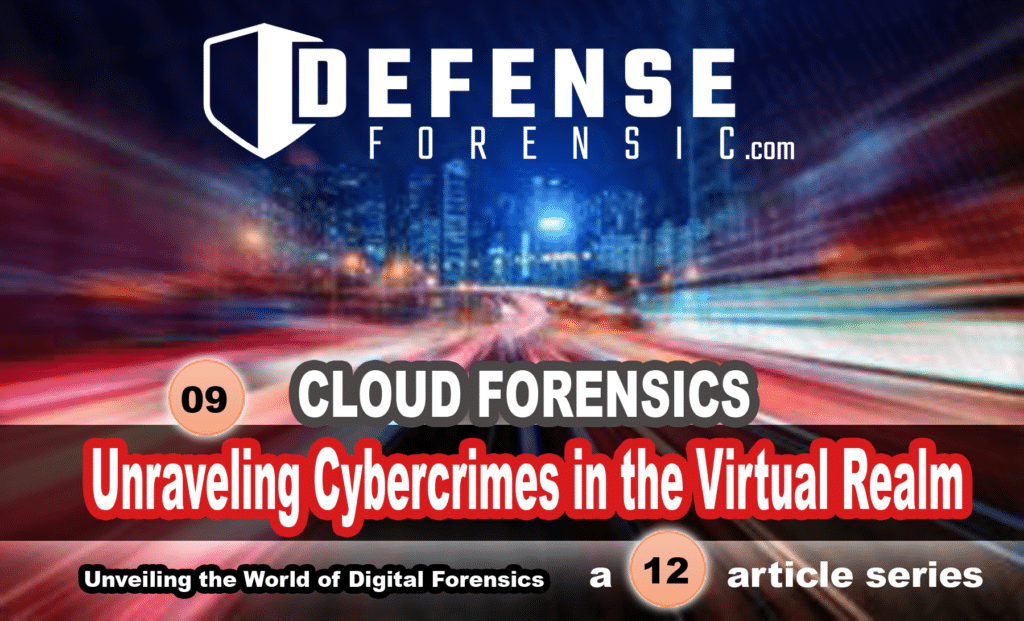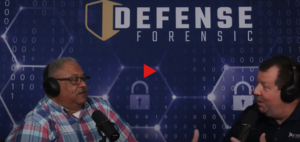The rapid adoption of cloud services has revolutionized the way individuals and organizations store, access, and manage their data. However, this shift towards the cloud has also opened up new avenues for cybercriminals to exploit. As a result, the field of cloud forensics has emerged as a crucial discipline in the investigation and prosecution of cybercrimes committed in the cloud. This article will delve into the world of cloud forensics, exploring data storage, access logs, and user activities, while presenting real-world case examples to highlight the significance of this field.
I. Understanding Cloud Forensics
Cloud forensics involves the application of traditional forensic techniques to investigate cybercrimes committed in cloud environments. It encompasses the collection, analysis, and preservation of digital evidence from cloud-based systems, enabling investigators to uncover critical information related to the commission of a crime. Key elements of cloud forensics include data acquisition, preservation, analysis, and reporting.
A. Data Storage in the Cloud
Data stored in the cloud is distributed across multiple physical and virtual locations, making the process of data acquisition more complex compared to traditional forensic investigations. Cloud service providers (CSPs) often replicate data across different data centers to ensure redundancy and availability. Forensic investigators must identify the relevant data sources, establish legal access, and preserve the integrity of the evidence during the acquisition process.
B. Access Logs and User Activities
Access logs and user activities play a vital role in cloud forensic investigations. CSPs maintain detailed logs that capture information about user activities, such as login attempts, file transfers, and system changes. These logs are valuable sources of evidence and can be analyzed to reconstruct the sequence of events leading up to a cybercrime. By scrutinizing access logs, investigators can identify the individuals involved, track their actions, and determine the extent of their involvement.
II. Real-World Case Examples
To illustrate the significance of cloud forensics, let’s examine two real-world case examples that demonstrate its application in unraveling cybercrimes committed in the cloud.
A. Dropbox Hack (2012)
In 2012, Dropbox, a popular cloud storage provider, fell victim to a cyberattack that resulted in a significant number of user accounts being compromised. The attackers utilized stolen employee login credentials to gain unauthorized access to sensitive user data. Dropbox’s cloud forensics team worked diligently to investigate the breach and mitigate its impact.
The investigators analyzed access logs to identify suspicious activities, such as unusual login locations and patterns. By cross-referencing the compromised accounts with the access logs, they were able to identify the source of the attack. The analysis revealed that the breach occurred due to a successful spear-phishing campaign targeting Dropbox employees. This case highlighted the importance of access logs in identifying and attributing cybercrimes in cloud environments.
B. Capital One Data Breach (2019)
In 2019, Capital One, a major financial institution, experienced a significant data breach that exposed the personal information of millions of customers. The attacker exploited a vulnerability in the cloud infrastructure of Capital One’s AWS environment. Cloud forensics played a pivotal role in the investigation of this breach.
Investigators meticulously examined access logs, system configurations, and network traffic to reconstruct the attacker’s activities. By analyzing the logs, they discovered a misconfigured web application firewall that allowed the attacker to gain unauthorized access and exfiltrate sensitive data. The case highlighted the importance of cloud forensics in identifying vulnerabilities within cloud environments and facilitating remediation efforts.
III. Best Practices in Cloud Forensics
To effectively conduct cloud forensic investigations, investigators should adhere to a set of best practices. These practices help ensure the integrity of the evidence and maximize the chances of successfully identifying and prosecuting cybercriminals.
A. Timely Response
Rapid response is crucial in cloud forensic investigations. Investigative teams must act promptly to mitigate further damage and preserve the evidence. Delayed response can result in the loss or alteration of critical information, rendering the investigation less effective.
B. Legal and Ethical Considerations
Investigators must navigate legal and ethical considerations when conducting cloud forensic investigations. They must obtain proper authorization and follow established legal procedures to access and acquire evidence. Additionally, privacy concerns must be addressed to safeguard the rights of individuals during the investigation process.
C. Collaboration with Cloud Service Providers
Collaboration between forensic investigators and CSPs is vital in cloud forensic investigations. Investigators should establish effective communication channels with the CSPs to gain access to relevant data sources and ensure the preservation of evidence. Cooperation between the two parties enhances the efficiency and effectiveness of the investigation.
Conclusion
Cloud forensics has emerged as a critical discipline in the investigation and prosecution of cybercrimes committed in cloud environments. The examination of data storage, access logs, and user activities provides valuable insights to unravel the intricate details of cybercrimes. Real-world case examples, such as the Dropbox hack and the Capital One data breach, highlight the importance of cloud forensics in identifying, attributing, and remediating cyberattacks in the cloud. By adhering to best practices and leveraging advanced forensic techniques, investigators can effectively navigate the virtual realm of cloud services to uncover evidence and bring cybercriminals to justice.
Sources:
1. Hong, J., Yoo, J., & Kim, H. (2015). Cloud Forensic Investigation Process Model and Its Applications. Security and Communication Networks, 8(13), 2197-2211.
2. Horenbeeck, M. V., Bem, J. V., & Luiijf, E. (2019). Cloud Forensics: A Review. Journal of Forensic Sciences, 64(1), 89-100.
3. Kumar, S., & Ravi, V. (2020). Cloud Forensics: An Overview and Open Challenges. ACM Computing Surveys, 53(5), 1-37.
4. Prince, D., & Jablon, B. (2019). AWS Forensics: Incident Response in the Cloud. No Starch Press.
5. Swadia, P. (2019). Forensic Investigation of Cloud Computing Environments. International Journal of Advanced Computer Science and Applications, 10(4), 294-299.





